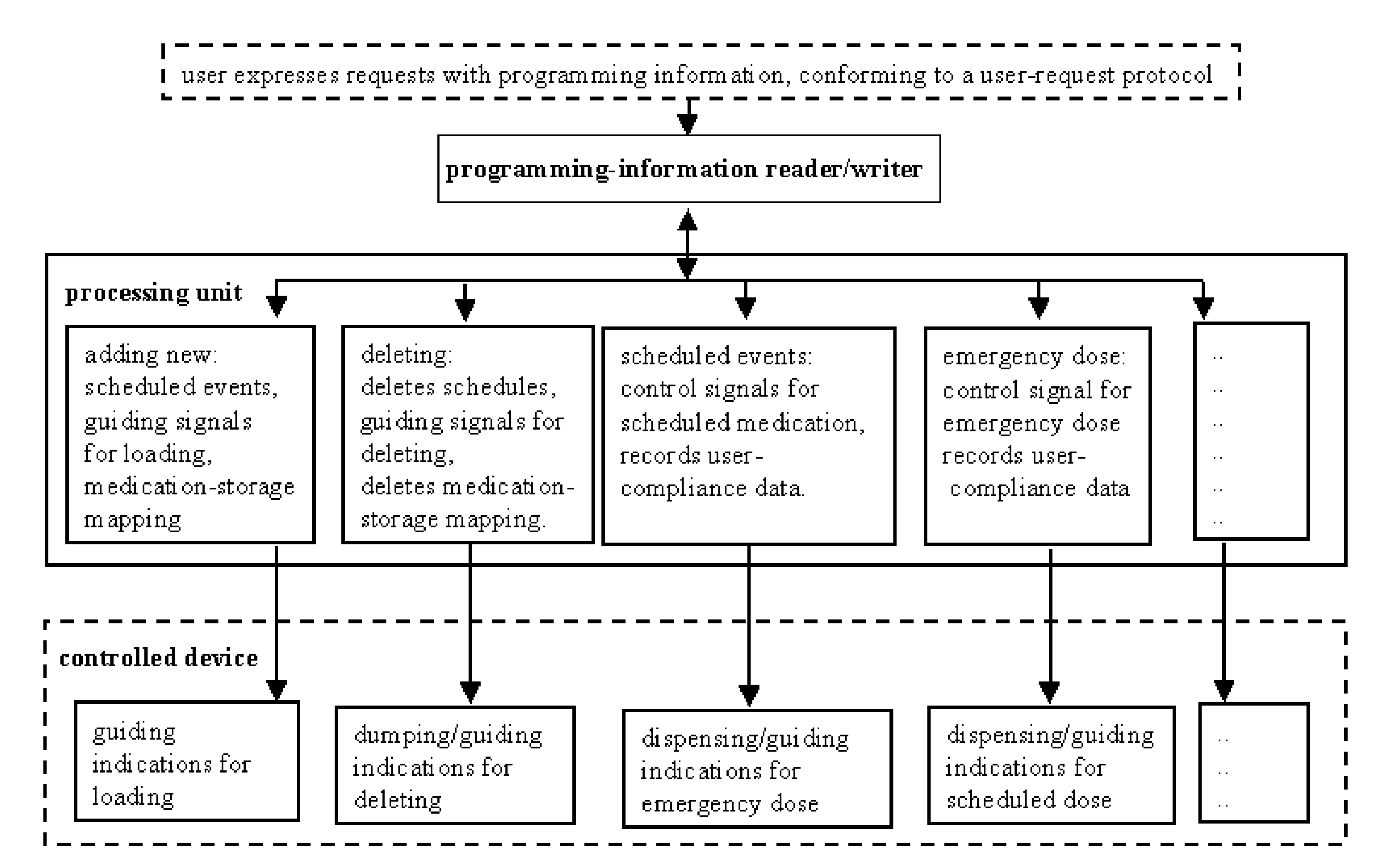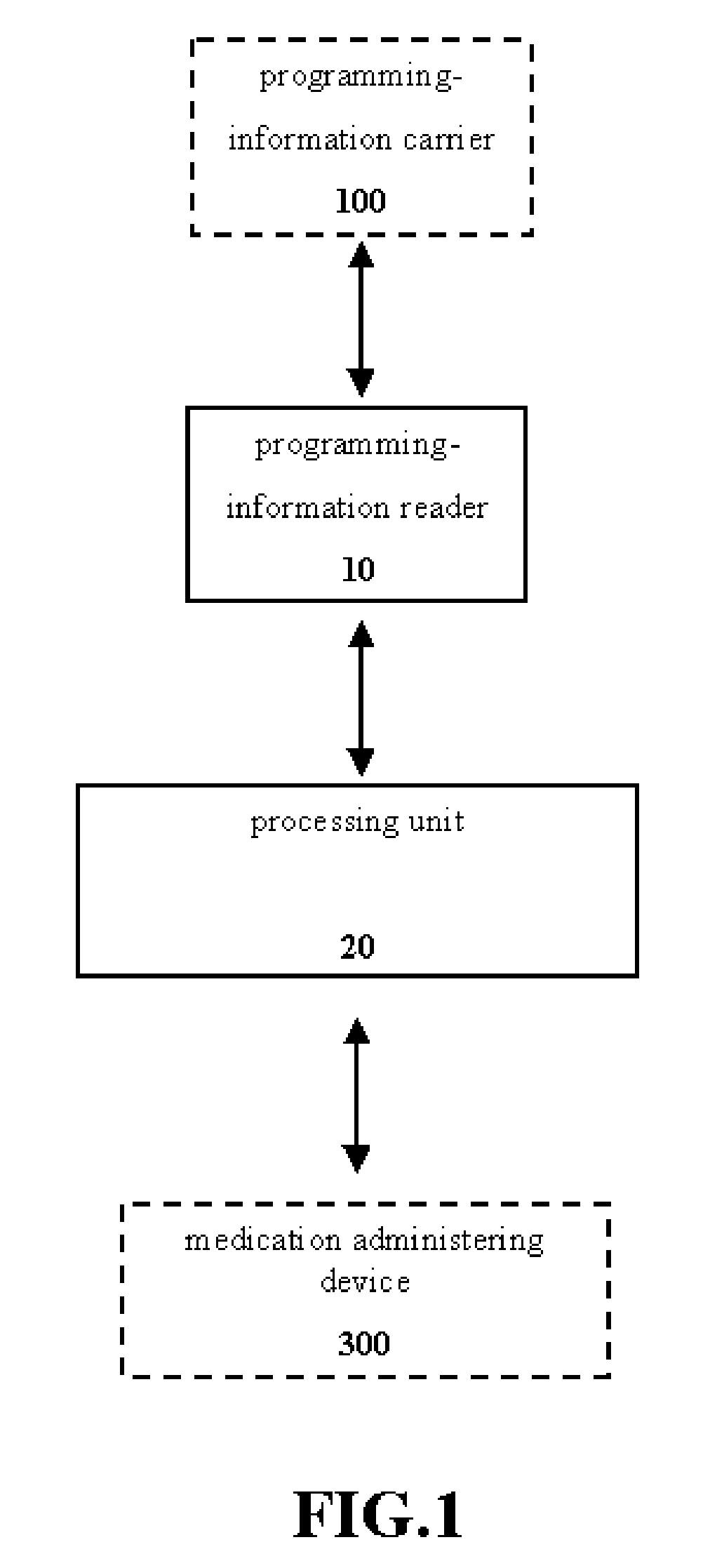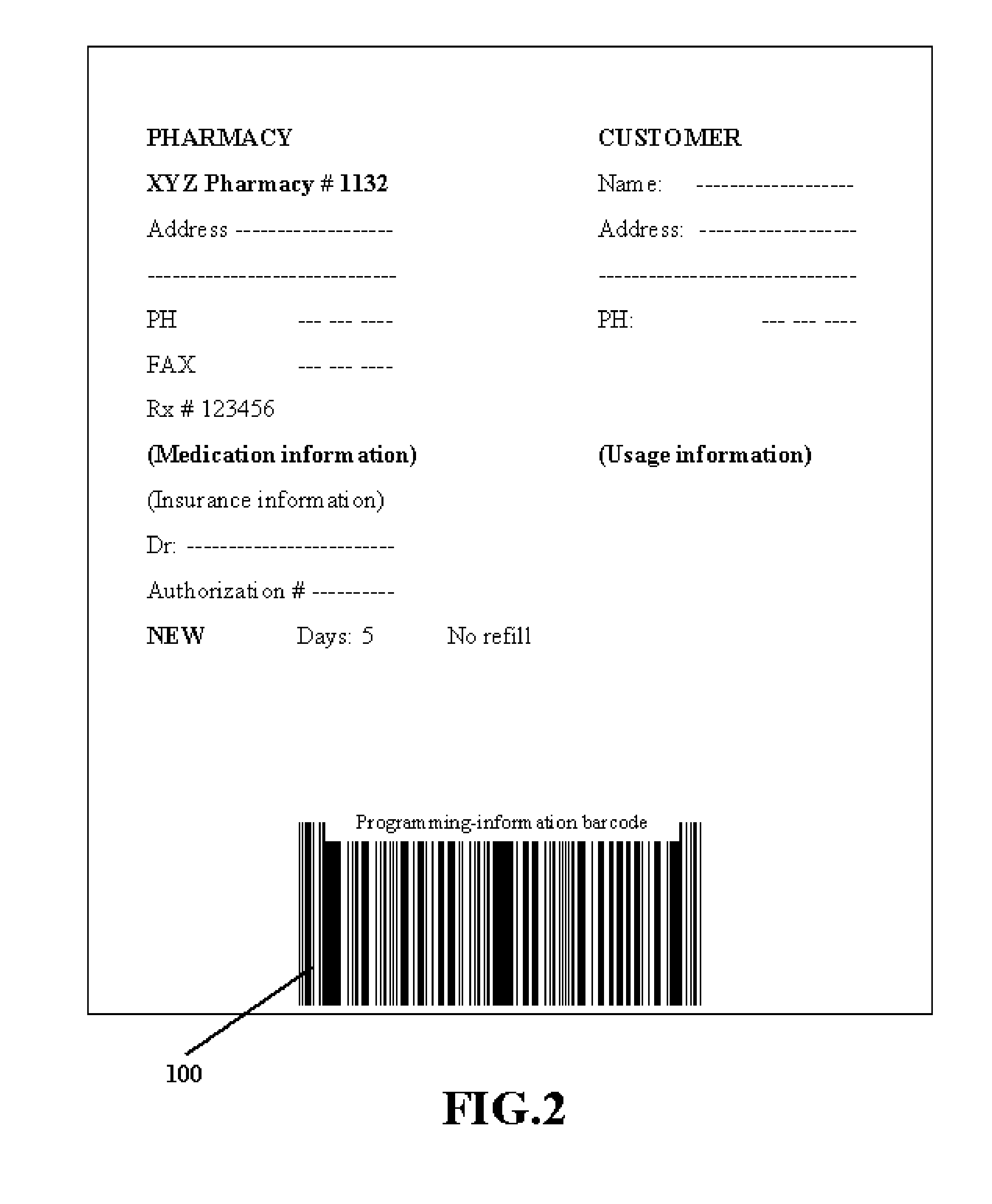Taking a wrong medication, with a wrong dosage, or at a wrong time could result in ineffective treatment, complication, or even death.
That further complicates the matter.
Besides specific shortcomings of each individual design, bulk medication organizers suffer from the following common disadvantages:(A1) They provide very limited help.(A2) User has to
label each storage compartment with usage information.(A3) User has to keep time and track scheduled events with other means.
Besides the specific shortcomings of each individual design,
dose-compartment medication organizers suffer from the following common disadvantages:(B1) User has to figure out a loading-scheduling plan according to the usage information.(B2) User has to follow the loading-scheduling plan to load the medications into the dose compartments.(B3) Loading becomes dramatically complicated and tricky as the number of medications increases.(B4) Practically they are not suitable for medications that require precise timing, or have very different or complex schedules.(B5) It is very difficult to add a new medication since user has to find an existing group with compatible schedule and identify the corresponding dose compartments.(B6) It is difficult to delete (cancel) a medication since the user has to search all dose compartments for that medication.(B7) User has to
label each dose compartment with schedule except for very simple and regular schedules (e.g.,
every morning).(B8) User has to keep time and track the scheduled events with other means.
They have further common disadvantages:(D1) Since now the order of dose compartments is tied to the sequence of dispensing, loading the medication and
programming the scheduled events become even more complicated.(D2) Most of them can only
handle simple schedules (e.g., three times everyday).(D3) Even if some of them can
handle complex schedules,
programming such schedules and loading the medications accordingly are very complicated and tricky, hence, practically prohibitive.
Although bulk medication dispensers offer several advantages over other groups, e.g., efficient storage, easier loading and deleting, they suffer from the following common disadvantages:(E1) User has to set the
clock.(E2) They typically require substantial user
programming(E3) They require complex user-programming interfaces (some prior art designs require a PC to program a bulk
medication dispenser).(E4) User has to find appropriate storage compartment (original one for a refill or empty one for new) to load the medication.(E5) User has to tell the system (through additional user programming) which medication is stored in which compartment.
As explained above, all these prior art designs require manual effort, or programming effort, or both.
Generally speaking, the designs with low level of
automation require low level of programming effort but high level of manual effort, the designs with high level of
automation require low level of manual effort but high level of programming.
This is a dilemma for the prior art designs.
Both manual task and programming not only make prior art devices difficult to use, but also can cause errors.
These prior art designs have overlooked a crucial fact, namely, the majority of medication users by far are
elderly people, who are least willing and able to perform such manual and programming tasks.
Even if a device has some wonderful features, complicated manual operation or user programming could cause the users not to utilize these features, not to utilize them to their fullest capacity, or possibly to abandon it all together.
Furthermore, the designs that require user programming, especially those require substantial or complex user programming, are not suitable for some users, especially vision-impaired users.
As long as these devices and designs require user programming and
clock setting, they
pose a severe and often prohibitive challenge to vision-impaired users.
Methods have been developed or proposed in prior art to ease user operations, but most of them merely shift the user operation burden to professionals.
Although it relieves user from grouping and loading the medications, this method imposes most restrictions upon the users among all prior art methods.
Besides specific shortcomings of each individual design, this method suffers from the following common disadvantages:(F1) All medications of a user have to come from a single provider that prepackages them, or they are left out.(F2) Only the medications of same schedule can be prepackaged (together).(F3) Practically, it is only suitable for long-term medications and medications with regular and simple schedules (otherwise, packaging instructions and programming are likely to be too complicated).(F4) Each specific design of dispenser can only work with one type of
package /
magazine and
vise versa.(F5) Each specific design of packages requires a specific packaging line.(F6) A user of a particular prepackaged dispenser is usually stuck with a specific provider (because of F4 and F5).(F7) Each type of
package /
magazine can only
handle certain types of medications.(F8) Each type of
package /
magazine is only suitable to a certain amount of medications.(F9) Only certain types of medications are suitable for pre-packaging.(F10) It is impossible to add a new medication (user has to discard medications already packaged and reorder).(F11) It is impossible to change the sequence of the medications (user has to discard medications already packaged and reorder).(F12) It is very difficult to delete a medication unless user can identify it by appearance and discard them from every unit-dose package.(F13) Cost is high due to service fees and wasted medications.
Generally speaking, any change in user's medication usually means discarding all prepackaged medications and reorder, since any
confusion or error may have devastating consequences.
Besides specific disadvantages of each individual design, this method suffers from the following common disadvantages:(G1) It is subject to cross
contamination and
hygiene problems since the devices will be passed to different users.(G2) User has to bring the device from and to the medication provider for new medication, returning (when medication finishes), and having it reprogrammed (if doctor has directed any change).(G3) It drastically changes the routines and increases the
workload of the medication provider.(G4) It generates additional service cost.(G5) It can only be used for prescription medications (no help for non-prescription medications).
Besides specific shortcomings of each individual design, remotely controlled medication systems have the following common disadvantages:(H1) They require large
supporting system including infrastructure and personnel, which in turn require considerable initiative and investment.(H2) The supporting systems must keep all
medical record of a user, track and administrate all medications of the user.(H3) They require
collaboration and coordination of many parties, including the insurance company and other caregivers of the user.(H4) Once enrolled, a user is likely to be stuck with a system for a long time since it is difficult to switch to another system.(H5)
The Internet can hardly be secured completely, and computer systems, especially large ones, can hardly avoid malfunction; hence, the user is exposed to additional risks, such as stolen personal and
medical information, administration of a wrong medication, a wrong dose, or a wrong time.(H6) The caregiver has to come to the user's home to load the dispenser periodically or anytime there is a change in user's medication.(H7) A high maintenance cost is charged to the user.
These designs have the following common disadvantages:(I1) They require specially designed medication containers.(I2) The memory strip, IC
chip and
barcode have to be affixed on the packages with accurate position and orientation.(I3) They require the specially designed medication containers be accurately mounted on the device such that the memory strip, IC
chip, or
barcode (hence the medication) are aligned with the reader or a set of electrical leads connect with that of the device.
When used with a
remote sensing method, such as RF tags as suggested in these prior art designs, multiple readers are(I6) subject to interference.
Although these designs can handle multiple medications, without providing a convenient method for user to load the medications into the devices, they require:(I7) the device or a detachable storage to be filled by a
pharmacy, or(I8) additional user operation, additional components, and additional controls.
In general, all these prior art designs with memory devices(I9) have limited applications,(I10) restrictive configurations, and(I11) very little flexibility.
Finally, all of the prior art programmable devices and systems have three common disadvantages:(J1) The methods of user-request expression (loading, refilling, modifying, deleting, taking emergency dose, etc) are too complicated and complicated user-input interfaces are required.(J2) They do not provide guided user operations.(J3) They do not provide automatic medication-storage mapping.
This kind manual medication-storage mapping not only is cumbersome but also can cause errors, prompting some prior art designs to require
pharmacy to load the medications, or to use redundant components or devices, each handling one medication.
In conclusion, despite the improvements of the method and system for managing and
administering medications, many problems remain unsolved, or their solutions remain unsatisfactory.
 Login to View More
Login to View More  Login to View More
Login to View More 


